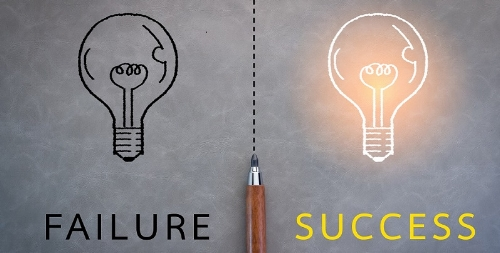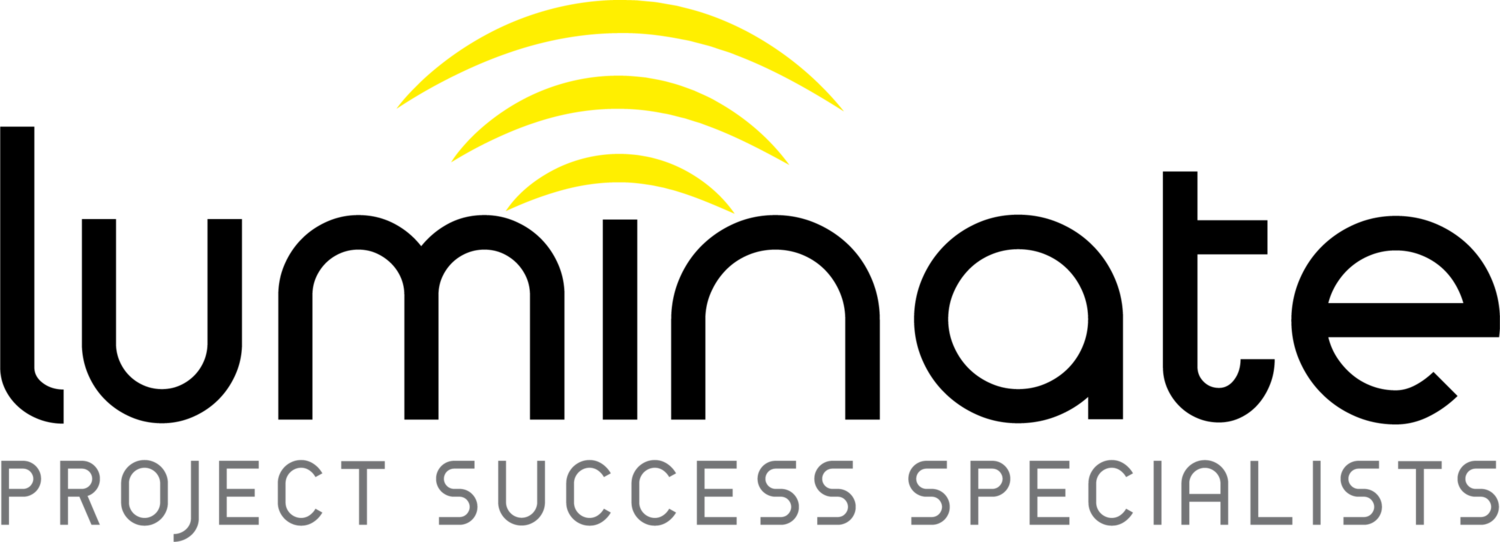
Feb 3, 2023
Most summers you’ll find me somewhere in the shade with a chardonnay by my side and something interesting to read. This year, I’ve gravitated towards a lot of those silly-season best and worst lists. Anyone that knows me won’t be surprised that I took particular interest in things like Auckland’s 50 best restaurants, top 10 fishing spots and top three putting mistakes. But it also got me thinking about the best and worst of project management. Over the past few years, we’ve run many project audits – we call them inflight “fitness tests” – as part of our quality assurance offering. When I look at these en masse, unsurprisingly, the same five weaknesses always crop up.
Here are the top five project management mistakes that I see time and time again.
Lack of a business case
Fact: projects aren’t just about what’s being delivered. They’re also about whether what was built justifies the investment of time, money and people-power. How do you know if it was all worth it? That comes back to whether the true impact of a project has been validated by the business – something that should be, but often isn’t, well-articulated in the business case.
Worse, many businesses dive headfirst into a project without a business case. This is a major red flag. How can you start a project when you don’t even know what business problem you’re solving? It’ll only lead to a plethora of problems: poor decision-making, projects that take too long (and too much money) to get off the ground, or projects that don’t add any business value at all.
Poor governance
Did the project have the right structures, information flow, processes and protocols in place to ensure accountability, transparency, responsiveness and sovereignty? If not, it’s that lack of control that will ultimately derail project delivery. The holy trinity looks like the project manager, sponsor and steering committee working together towards a common goal. But, when you’re constantly fielding changes to timings and unforeseen costs, stakeholders start to lose confidence. The result? The project becomes compromised.
Lack of confidence in the project manager
What’s more, if the project manager has “lost the room” and doesn’t have the confidence of the steering committee, then you’re on a hiding to nothing. Sponsors and steering committees need three things:
- To recognise the importance of capability and chemistry in their project teams and bake that recognition into project start-up
- To monitor and measure the impacts of gaps in capability and a lack of project team chemistry
- Most importantly, the courage to act on any concerns they have around these risks
Be brave, especially around key project roles, and remember that if you can’t change the people… change the people.
Dissatisfied stakeholders
What’s the best way to evaluate a project’s success? The usual touch points are on-time delivery, within budget and to the original scope. But in reality, very few projects meet all these targets, and each one missed is a hammer blow to what really counts – stakeholder satisfaction.
A KPMG report on global project management reveals only 19% of projects deliver stakeholder satisfaction. Why is that? Some will say it comes down to the delivery framework, but that answer is only beating around the bush. It’s people, and more specifically, the people in key roles who probably don’t have the skillset or capabilities to make the hard decisions when called upon.
Project manager isn’t a good fit
In the throes of the COVID pandemic, I talked about the return of the “trusted expert” and how finding the right expert for your project will make or break its success. Assign an introverted project manager to a sprawling, complex project, and it’ll be like throwing them into a lion’s den. Vice versa, an over-confident, emotionally stunted project manager will likely under-deliver on all the granular details.
The Luminate difference
Choose the A-team for fast, successful project delivery. That’s our promise to you – guaranteed.
At Luminate, we’re experts at fighting project management fires. We don’t put fires out – our people run directly to the source. We dive deep into the heart of a project – the people – to quickly uncover what’s stopping the project from moving forward, and what’s needed to get the team back on track. What’s more, we don’t “spray and walk away”. We provide ongoing mentoring, skills development and peer review, so your business continues to deliver successful projects over and over again.
Working with us is simple:
- Book a call with Jarrod here https://luminate.nz/schedule/
- Appoint an expert recovery manager
- Get your projects back on track
Once you book a call, you’ll have taken the first step to deliver successful projects.

Oct 21, 2022
EQ gets a lot of press these days, but what exactly is it?
EQ, or emotional intelligence, can be best described as the ‘intelligent use of emotions’. It’s about having the self-awareness, self-control and self-expression to ensure you handle your relationships with sound judgement and empathy. And as leaders command groups of people, all of whom have emotions, it doesn’t take a genius to work out why leaders with EQ usually excel in their roles.
Leaders who have EQ have proven time and time again to be some of the strongest and most inspirational leaders. Think Indra Nooyi and Richard Branson.
But let’s look closely at why emotional intelligence in a leadership role affects the quality of decision making and ultimately, the successful delivery of the project.
Project teams under stress can show high emotions. This is when blame can set in and relationships can be tense. A high EQ leader will look after and empathise with their team in a way that reduces stress and connects the team. This means that members aren’t vying for their own interests, unable to see the connection. An EQ leader is aware of what is going on within the team and the project, and they will know how to manage individuals in the team so that they can collectively work together for the common goal.
The second trait of the EQ leader is that they foster effective communication. This allows all team members to voice their opinions, flag issues early and unite the team to solve problems for the benefit of the overall project. Bad decisions are often a result of a lack of communication. An EQ leader has this covered as they are open to options, and prepared to find alternative strategies that might work better. They are prepared to accept their failures and learn from their team. An EQ leader is prepared to learn from a mistake, and hope to grow through experience. This is far superior to a leader who out of weakness refuses to budge from a clearly failing strategy.
Overall, a leader with strong EQ can ensure the quality of decision making is reflective of the project and the business’s best interests. And we all know a team full of like-minded supported people is a far nicer environment to be in as opposed to a team dragging their heels or feeling undermined or neglected.
A leader with EQ and strong decision making processes is your best chance at project success. Have you got the right person leading your next project?

Sep 30, 2022
There are some traits that a natural born leader will have that makes them shine in a challenging environment. The people that inspire others to achieve are usually emotionally intelligent and brave. As leaders, they are not afraid of confrontation. They front foot the tough conversations and take the necessary action required of a great leader to achieve their goals and visions. This includes the ultimate action, i.e. ‘If you can’t change the people, change the people.’
However, too often, a ‘chocolate teapot’ rises without mandate or merit and is gerrymandered into a leader’s role, simply because they have some knowledge of the functional domain. Requests fall on deaf ears and the impotence demonstrated by the aforementioned teapot results in team disengagement, disharmony and distrust. And without the fundamental trust being in place, the team never feels confident in having uncomfortable conversations and to embrace innovative thinking and positive conflict to get to a better solution. Without the leadership in place to foster trust in the team, they are never able to agree on and be held accountable for achieving the desired goal. Quite simply, a weak leader will never result in a high performing team. Rather, they will give rise to staff turnover, missed deadlines and unproductive cashburn. In short, failure.
We have compiled five top reasons why leaders need to be courageous.
#1 Weak leaders have a lack of vision
Weak leaders are often puppets of someone else higher up. They tend to not have the courage to work to come up with a vision, and as teams usually look to their leaders to provide a vision or work with them to come up with one, it is often the case of the blind leading the blind.
“Leadership is the capacity to translate vision into reality” – Warren Bennis
No vision = no inspiration. No inspiration = no passion. And who wants to work for a leader who has no passion in the role that they play?
Strong leaders have a vision, and work with their team to enhance that vision. They know that a vision will inspire their team to keep working hard towards the goal.
#2 Weak leaders don’t hire the right people for the job
Weak leaders are afraid to assess candidates based on factors that aren’t on their checklist of expected achievements. They cannot see past such a checklist and thus sometimes miss the smartest, most creative people their team actually requires.
Strong leaders are not afraid to hire team members that will challenge them. Strong leaders embrace such challenges and are not afraid to learn from others and face confrontation gently where needed.
#3 Weak leaders leave no room for the unknown
Strong leaders embrace vulnerability and admit to, and own, not knowing everything, because vulnerability is the foundation of building trust. Weak leaders on the other hand can’t stand the thought of being corrected.
Weak leaders do not think outside of the box. They don’t want to learn anything new; they just want to follow what they know and stay on a safe straight line to the finish point, no room for negotiations.
Conversely, a courageous leader is willing to be challenged on their assumptions and actually invite the opportunities to learn how to be better.
#4 Weak leaders will always find a scape-goat
If your project or department is run by a cowardly leader, don’t think for a minute they will accept the blame if a mistake is made. Instead, it will be everyone else’s fault but theirs.
Alternatively, a brave leader and a good leader will always accept responsibility, even when sometimes it is not directly their own fault. They own their mistakes and find continuous ways to improve. Cowardly leaders do not have this attitude.
#5 Weak leaders avoid confrontation at all costs
Weak leaders have zero idea how to face a challenge head on and in good nature. As aforementioned, if there’s a mistake, someone else is to blame. If there is a challenge put to them or perhaps someone has a different viewpoint it is usually approached with a ‘we are doing it my way or the highway’ attitude.
A strong and good leader knows how to efficiently work through confrontation. A weak leader sweeps it under the rug and hides from it.
Chocolate teapot leaders are ineffective at best; starved of the courage that is required to successfully run a team. At worst they’re a complete liability, avoiding all tough areas of being in charge and will simply shut down anything they don’t agree with or avoid it entirely. Projects and businesses don’t typically fail because of technology issues, they fail because of people. Choosing the right people to lead is very important to ensuring the success of your project and your business.
In a nutshell, leadership requires bravery and courage. Choose who leads your team wisely, it may well be the difference between success and failure.
And remember, ‘If you can’t change the people, change the people.’

Sep 9, 2022
The steering committee is integral to a project’s success. In too many cases the steering committee’s role is often misunderstood to be all about control. Sure, control plays a small part, but it is a minor one. The key role of the steering committee’s (SC) is seen to steer a project team through deliberation, decision making and then supporting the team to a successful conclusion.
The SC is there to empower key project stakeholders and it is a great resource in guiding and steering the ship through the murky waters of the project’s quest. Think of the SC as a navigator suggesting the ship go east to find the treasure. However, it is up to the project delivery team to find a way to turn the ship east and maintain that course.
Having the right people on the SC is essential. So, who should you choose to be on your SC?
First off, look for members with high emotional intelligence – they will understand how behaviours and interactions can affect the productivity of the project and work better in a team dynamic.
A good mix of experienced leaders and subject matter experts is a must, but sometimes still not good enough. Be careful about loading your committee with homogenous stakeholders. You need a balanced and representative team as opposed to a team that is focused on their own agenda and not the benefit of the wider business.
The SC must be clear on their purpose. The best way to ensure this is to articulate the roles, responsibilities and formal governance criteria and protocols of the SC at the very start of the project. Having the SC sign-up to a ‘North Star’ for the project is vital. This includes the sponsor’s articulation of the problem that needs to be solved, the impact of that problem on the business and their vision of what constitutes success.
After all, it’s the sponsor’s signature on the business case and ultimately they’re accountable for the success (or failure) of the project. And because of this, it’s in their best interests to be judicious in nominating and appointing the steering committee.

Jun 3, 2022
Once upon a time, in the not-so-distant past, going into the office from 9 to 5 was the norm, it was the expected and it was the undisputed.
Covid changed everything, and its impact is being felt more now than ever, even compared to the initial chaos it sprung upon us all.
Forced to work from home, spend time with family members and learn new hobbies and skills all from the comforts of one’s home, made a lot of us question what we wanted from life, and from work. As a result, millions of people left their jobs in search of something more fulfilling that provided greater flexibility.
Lockdowns across the world have shown that many people like to work from home and like to spend more time with family, and with the additional time to ponder, many people have questioned the direction of their work lives.
This shift in finding work-life balance has been coined the Great Reshuffle.
The ability to work remotely is now valued as one of the strongest differentiating factors for people when searching for the right role. Many people desire flexibility and are not tempted by a job that requires them to be in the office during all working hours of the day. In fact, it is predicted that life will not return to the way it was before the pandemic.
So, if life is to not return to pre-pandemic expectations, what expectations can employers have and what options should they be looking to offer project delivery teams.
As an employer, consider offering flexibility that allows your team to work remotely and in-office as they wish. In this, it might be worth considering office buildings and what function they provide. In the not so distant future, office’s may serve as a cultural touchstone and a place for meeting clients or recruiting.
This means future team members will need to be self motivated, self sourcing and self directing to have the ability to remain motivated and organised to work from home. Each employee must have access to, and the ability to know how to use, all forms of electronic communication required for the job to work remotely.
In terms of project delivery, a Project Sponsor must be able to set up and maintain communication channels that need to be straightforward and up-to-date, and that all members of the team are responsible and self-reliant. Clarity and connection are key when working remotely, ensuring that everything is transparent and easily accessed.
And most importantly, for it all to work, make sure that you as an employer, value your team and make them feel valued. Because if the Great Reshuffle has taught us anything, it’s that people are now looking for jobs that make them feel fulfilled in life. The last thing you want to hear as the closing words from your team members, is that they’re going to go somewhere they feel valued.
The onus is on you, the Project Sponsor to make your project roles the ones worth sticking around for. Make sure that flexibility is readily accepted, because for the most part, hybrid is the new way forward enabling a win-win situation for workers and organisations alike.






